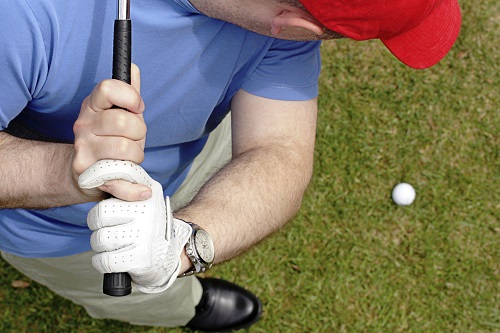Golf is a sport that requires precision and control, and one of the most important factors in achieving these things is having a good grip on your club. But did you know that there are several different golf grips to choose from? In this comprehensive guide, we’ll explore the most common types of golf grips and help you decide which one is right for you.
Contents
What is a Golf Grip?
Before diving into the different golf grip types, let’s first define what we mean by “golf grip.” Simply put, a golf grip is how you hold your club. The connection between your hands and the club allows you to control the direction and power of your shots.
Different Types of Golf Grips:
- Overlapping Grip
- Interlocking Grip
- Ten-Finger Grip
- Strong Grip
- Weak Grip
Overlapping Grip
The overlapping grip, also known as the Vardon grip, is the most common type of golf grip. It’s named after Harry Vardon, a legendary golfer who popularized this grip in the late 19th century. To use this grip, place the pinky finger of your trailing hand (right hand for right-handed golfers, left hand for left-handed golfers) between the index and middle finger of your lead hand (left hand for right-handed golfers, right hand for left-handed golfers).
Pros:
- Provides good control and stability.
- Easy to learn and master.
- Used by most professional golfers.
Cons:
- It may not be comfortable for golfers with larger hands.
- It may promote a slice if the grip is too tight.

Interlocking Grip
The interlocking grip is another popular type, especially among golfers with smaller hands. To use this grip, intertwine your trailing hand’s pinky finger with your lead hand’s index finger.
Pros:
- Provides good control and is comfortable for golfers with smaller hands.
- Helps prevent the grip from slipping during the swing.
Cons:
- It may not provide as much stability as the overlapping grip.
- It may feel uncomfortable for golfers with larger hands.
Ten-Finger Grip
Also known as the “baseball grip,” the ten-finger grip involves placing all ten fingers on the club. This grip is popular among beginners and younger golfers.
Pros:
- Provides a lot of power and is easy to learn.
- It can help prevent grip slippage.
Cons:
- It may not provide as much control or accuracy as other grips.
- It may feel uncomfortable for golfers with larger hands.
Strong Grip
A strong grip is one where the hands are rotated to the right (for right-handed golfers) or left (for left-handed golfers) on the club. This grip can help golfers who tend to slice the ball.
Pros:
- It can help correct a slice and provide more power.
- Helps promote a draw or hook.
Cons:
- It may not be as comfortable for some golfers.
- It may promote a hook if the grip is too tight.
Weak Grip
A weak grip is one where the hands are rotated to the left (for right-handed golfers) or right (for left-handed golfers) on the club. This grip can help golfers who tend to hook the ball.
Pros:
- It can help correct a hook and provide more control.
- Helps promote a fade or slice.
Cons:
- It may not be as comfortable for some golfers.
- It may promote a slice if the grip is too tight.
Choosing the Right Golf Grip
Choosing the Right Golf Grip Choosing the right golf grip is a matter of personal preference and depends on several factors, including hand size, swing style, and shot shape. When choosing a golf grip, consider the following:

Hand size:
Choose a comfortable grip that allows proper hand placement.
Swing style:
Choose a grip that complements your style and promotes good swing mechanics.
Shot shape:
Choose a grip that helps you achieve your desired shot shape.
Conclusion:
In conclusion, the golf grip is essential to a golfer’s game. The type of grip you choose can significantly impact your shot-making ability and overall performance. Experiment with different grips to find the one that feels most comfortable and natural to you, and work with a golf instructor to fine-tune your grip

